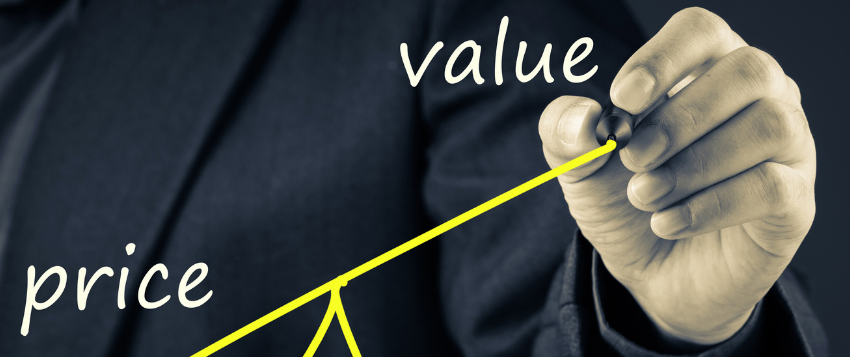If you’ve ever watched your order volume climb while your inbox, refunds and costs explode faster, you’ve met the dark side of growth. Sustainable scaling feels different. It’s calmer. Your weeks have a rhythm. Each sale adds margin, not mayhem. Customers come back because the experience stays consistent even as you get busier. That’s the goal of this guide: practical moves that help you grow without breaking the business you’re building.
Growth vs sustainable scaling

Hype-driven “grow at any cost” playbooks made headlines for a reason, but speed without structure often turns complexity into a tax on every part of the company. Sustainable scaling asks a simpler question: does every new rand of revenue require equal (or more) effort, cost and management attention? If yes, complexity is outrunning you. Research on blitzscaling is explicit about the trade-offs involved; it can work, but only when the market window truly demands it and you’re prepared to absorb the inefficiencies it creates. Most founders aren’t in that window and don’t need to be.
Make product–market fit a moving target (because it is)
Treat PMF as something you defend, not a finish line you cross. Watch retention curves, repeat purchase rates and the reasons customers leave. Don’t just read dashboards –schedule short interviews to find the friction that erodes fit. Evidence-led PMF validation (e.g., controlled tests that capture real demand) consistently outperforms gut feel or vanity metrics and gives you cleaner signals before you pour on spend.
Unit economics: price for value, earn your payback

Revenue without contribution is just risk you haven’t priced yet. Calculate contribution margin by segment and channel; then decide what you’ll do when a segment is expensive to serve: price it properly or let it go. For acquisition efficiency, a useful north star is CAC payback (how long it takes gross-margin-adjusted revenue to recover your customer acquisition cost). Benchmarks vary by model, but credible guides put “good” B2B SaaS payback around 12–18 months, with elite operators faster – make your own benchmark explicit and track it monthly. Pair that with honest willingness-to-pay work so you’re charging for the value customers feel.
Go-to-market focus and channel math
Pick an ideal customer profile you can win repeatedly. For every channel, model reach → conversion → order value → retention. Double down where the loop is proven; pause where you can’t measure repeatable outcomes. Partnerships and pilots are great, but they must pay their way – set a threshold up front (e.g., pilot converts to X% paid within Y weeks) and hold yourself to it.
Build an operating rhythm
Scaling companies run on cadence. Set one company goal per quarter, give teams a small handful of measurable outcomes, and hold a weekly review that removes blockers rather than creates new ones. OKRs are useful here not as theatre but as a shared language that links the “why” to the work. Keep dashboards short – cash runway, pipeline by stage, activation and retention, support responsiveness, hiring pipeline, and two or three quality metrics that define your promise.
Team and culture: hire for slope, not just pedigree
At scale, your best hires learn faster than the company changes. Define “what great looks like” in the role and use work samples to assess it. Protect culture through clarity: write down how decisions get made, who owns what, and how teams hand off work. As a founder, spend most of your time on people, customers and cash. Delegate tasks; keep decisions.
Cash, runway and capital strategy

Cash is oxygen. Keep a 12-month rolling cash forecast and run three scenarios (base, downside, stretch). Extend runway by improving collections, negotiating terms and cutting waste before you cut growth muscle. Match funding to the job: grants for steady innovation, revenue-based finance for working capital, equity for speed where a short market window truly exists. Don’t let money become the strategy; let it amplify one.
Risk and resilience
Map regulatory duties, data protection and key-person dependencies. Create simple playbooks for outages, supply shocks or reputational hits. Back up the data. Split finance duties (no single person should approve and reconcile). This isn’t about zero risk; it’s about preventing a week of chaos from erasing a year of progress.
Common scaling traps and how to dodge them

Premature scaling is still a big killer: pouring fuel on unproven fires, hiring ahead of clarity, or expanding before the unit economics work. Longitudinal research shows how often this happens and why it hurts. Keep the stages in balance – customer, product, team, model and financials should mature together.
Where accelerators can help (and where they can’t)
A good programme doesn’t replace your strategy, it speeds it up. Look for three specifics: quality bars for deliverables (deck, financial model, data room), mentors who review real work and open doors you can track, and access to capital or customers with actual meetings, not just keynotes. Large multi-country studies show accelerators can be effective, but outcomes vary widely by programme design and selection.
The reality for women founders: the context we must fix

Women entrepreneurs across emerging markets face two structural headwinds that make “efficient growth” harder than it should be: financing gaps and digital barriers. The World Bank’s We-Finance Code highlights the macro-level value of closing those gaps –and mobilises regulators and financial institutions to act. Meanwhile, affordability and safety online still hold many women back from fully using digital channels for growth; recent global surveys report both high costs of mobile data and widespread harassment, which directly suppresses visibility and sales. Programmes designed for women founders need to address these realities head-on.
Her Potential Entrepreneurship Programme
If you’re a woman founder building in Africa and you want to scale with discipline, this programme compresses your learning curve. Over a focused sprint you’ll sharpen your model, prove demand through real pilots, and leave investor-ready with a clean data room. You get weekly mentor reviews, leadership coaching, and practical support that turns plans into execution. Sustainable scale is a choice you make every week – prove what works, price it properly, build a rhythm, and fund the next step with clear eyes. Apply now.







